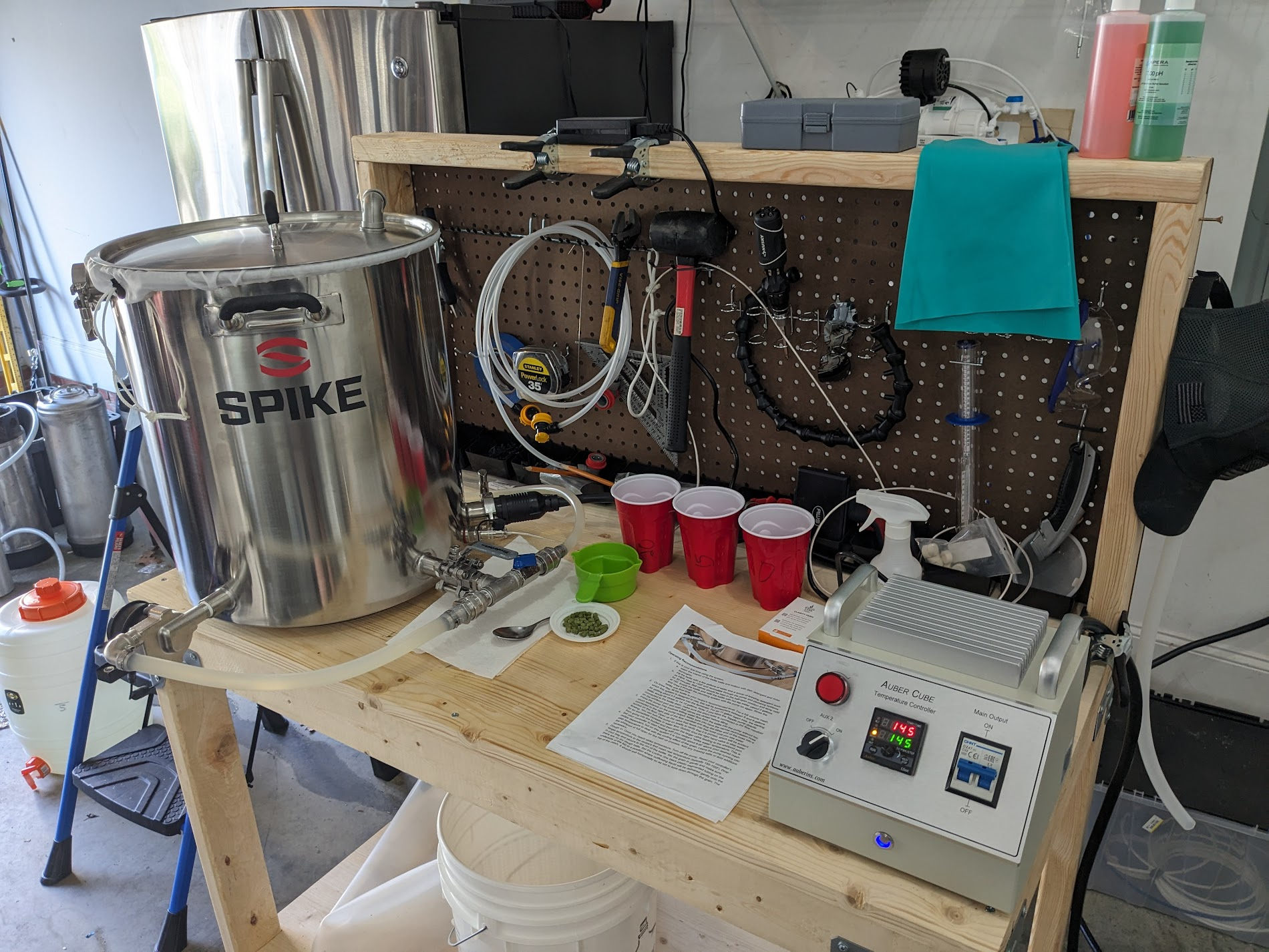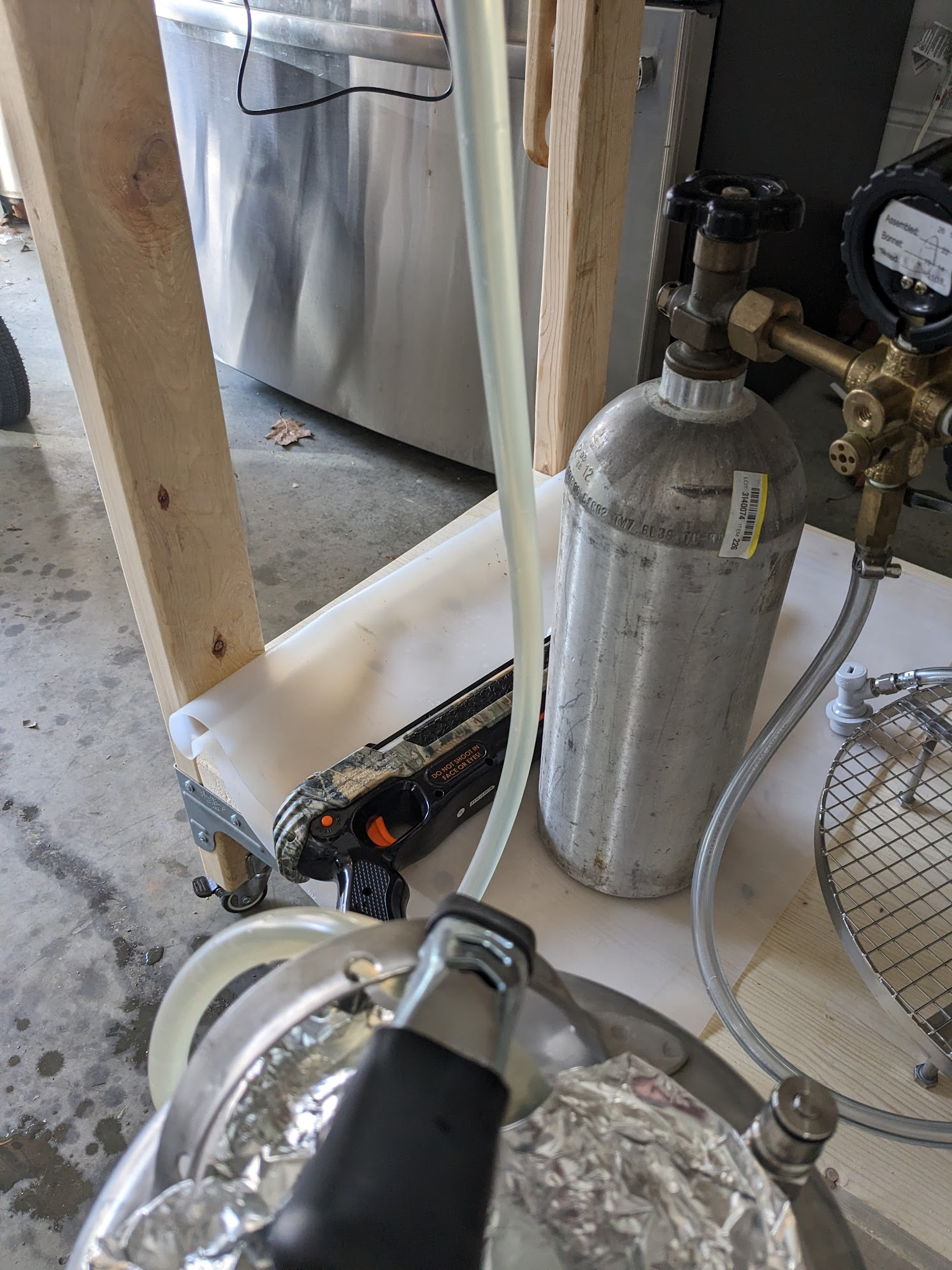I'll try to keep this main post updated in addition to adding replies as I use the system.
I do not have this in my possession yet, but the process thus far has prompted me to start a thread already.
Why? Because Bobby from BrewHardware provides outstanding customer service.
Part 0: The Discovery Process
I've purchased a few things from BrewHardware in the past. The most notable purchase was a HotRod HeatStick and Topsflo TD5 back in ~2018 to improve the performance of a 120V Grainfather I had at the time. The HeatStick was an awesome solution, allowing me to get a good boil in the GF as well as heat up sparge water during the mash.
I've spent the past month or so kicking the tires of a bunch of systems. I got out of homebrewing a couple of years ago when I moved and I need the majority of the hot side, with the exception of a JaDeD Hydra that I've always liked using--this helped drive me in a direction away from the tall, skinny systems like Anvil, BrewZilla, etc. I'm also attracted to the modularity of some of the other setups.
Step 0 for me was to determine if I'd go with electric or gas. I have natural gas hook-ups outside, but it can get muggy and the mosquitoes get pretty awful here in North Carolina, so I'd rather at least stay in the garage. I decided fairly quickly to go with a 240V system, so I got a receptacle installed in the garage as well as a reverse osmosis system and continued my research.
I started narrowing things down. The Speidels Braumeister has always attracted me. A friend in California had one and it made great beer, but it's very expensive and seems to have proprietary components. The Brewtools B40 looks cool, but it's not particularly powerful, is fairly expensive, and seems to require a fair number of extras to operate super well.
Spike's Solo system looks pretty nice, but it seems quite overpriced to me for what it offers. SS Brewtech's SVBS looks okay, but seems to be a take on the proprietary urn style of systems and I didn't want that this time around.
The Unibräu looked pretty solid to me, but I really needed a good way to lift the bag/basket without using my back too much, as I have degenerative disc disease these days.
We finally get to my first call to Bobby at BrewHardware. I did my due diligence and knew that if I talked his ear off with a bunch of questions, I would go ahead and buy a gift card to his shop so as not to waste his time.
The call lasted about 30 minutes. We discussed everything. Vessel size, Spike NPT vs. Blichmann with the bottom drain vs. the Spike Get Tanked edition. Topsflo TD5 vs. RipTide, heating element styles, BrewCommander vs. Auber vs. other options... really thorough, informative call.
With information gathered, I'd narrowed it down to a few options:
At one point in the full custom/DIY consideration process, I talked to Bobby from BrewHardware yet again and he graciously offered his wisdom regarding building a custom controller (I am fairly comfortable with DIY electronics). Frankly, the price of a completely DIY Auber setup is not far off from prebuilt, and there's the potential frustration associated with DIY.
Part 1: The Decision
Yep, I talked to Bobby again at least one or two more times before pulling the trigger. Again, he was more than willing to put up with my questions.
What did I end up with? Well, really quickly, let's talk about a couple of quick considerations:
Shout out to @Bobby_M for the excellent customer service. I look forward to checking the system out!
I do not have this in my possession yet, but the process thus far has prompted me to start a thread already.
Why? Because Bobby from BrewHardware provides outstanding customer service.
Part 0: The Discovery Process
I've purchased a few things from BrewHardware in the past. The most notable purchase was a HotRod HeatStick and Topsflo TD5 back in ~2018 to improve the performance of a 120V Grainfather I had at the time. The HeatStick was an awesome solution, allowing me to get a good boil in the GF as well as heat up sparge water during the mash.
I've spent the past month or so kicking the tires of a bunch of systems. I got out of homebrewing a couple of years ago when I moved and I need the majority of the hot side, with the exception of a JaDeD Hydra that I've always liked using--this helped drive me in a direction away from the tall, skinny systems like Anvil, BrewZilla, etc. I'm also attracted to the modularity of some of the other setups.
Step 0 for me was to determine if I'd go with electric or gas. I have natural gas hook-ups outside, but it can get muggy and the mosquitoes get pretty awful here in North Carolina, so I'd rather at least stay in the garage. I decided fairly quickly to go with a 240V system, so I got a receptacle installed in the garage as well as a reverse osmosis system and continued my research.
I started narrowing things down. The Speidels Braumeister has always attracted me. A friend in California had one and it made great beer, but it's very expensive and seems to have proprietary components. The Brewtools B40 looks cool, but it's not particularly powerful, is fairly expensive, and seems to require a fair number of extras to operate super well.
Spike's Solo system looks pretty nice, but it seems quite overpriced to me for what it offers. SS Brewtech's SVBS looks okay, but seems to be a take on the proprietary urn style of systems and I didn't want that this time around.
The Unibräu looked pretty solid to me, but I really needed a good way to lift the bag/basket without using my back too much, as I have degenerative disc disease these days.
We finally get to my first call to Bobby at BrewHardware. I did my due diligence and knew that if I talked his ear off with a bunch of questions, I would go ahead and buy a gift card to his shop so as not to waste his time.
The call lasted about 30 minutes. We discussed everything. Vessel size, Spike NPT vs. Blichmann with the bottom drain vs. the Spike Get Tanked edition. Topsflo TD5 vs. RipTide, heating element styles, BrewCommander vs. Auber vs. other options... really thorough, informative call.
With information gathered, I'd narrowed it down to a few options:
- BrewHardware something
- Clawhammer Supply
- Blichmann BrewEasy Compact
- Full custom to my own specifications
- I'd prefer a bit more capacity than 10 gallon but less than 20
- The pump in the system is not ideal, but that's easily replaceable and not a dealbreaker
- The main reason: the recirculation sprayer. I've had bad experiences with excessive hot side aeration, and good experiences trying to reduce it. The sprayer just seems like a great way to get the most HSA possible. I consider modifying it further, but really didn't want to have to mod a brand new system on day 1.
- Size. 10 gallons is just a little smaller than I really want. I don't often brew huge beers, but having the option to would be nice.
- Direct Deposit Return Tube: I kept bouncing between this being a good thing and a bad thing. The theory seems sound to me, but I kept seeing discussion about it causing channeling in the grain bed and was scared off by the comments.
- Power: 3500 watts is okay I guess. I've brewed with 3800 before and found it adequate, but more is more.
- Price: I am willing to pay more for Made in USA, but it's always a consideration.
At one point in the full custom/DIY consideration process, I talked to Bobby from BrewHardware yet again and he graciously offered his wisdom regarding building a custom controller (I am fairly comfortable with DIY electronics). Frankly, the price of a completely DIY Auber setup is not far off from prebuilt, and there's the potential frustration associated with DIY.
Part 1: The Decision
Yep, I talked to Bobby again at least one or two more times before pulling the trigger. Again, he was more than willing to put up with my questions.
What did I end up with? Well, really quickly, let's talk about a couple of quick considerations:
- I decided to build a workbench with my 10 year old son to use in part for brewing, and in part for other random stuff in the garage. We built it using the Simpson Strong-Tie WBSK and a set of casters. This made me decide against the Blichmann Bottom Drain version of Bobby's system because I didn't want to leave it there at all times.
- I want to use my immersion chiller. I've found greater overall success with them over the years than counterflow or plate chillers, if only for the simplicity.
- I've taken to fermenting in corny kegs. They're easy to clean, easy to fit in a refrigerator for temperature control, and I prefer naturally carbonating my beers. It also makes splitting batches easier (that said, I did have a Spike conical with a ton of accessories and loved that thing)
- Forgot to mention it earlier, but I like the idea of recirculating to the top and bottom at the same time in the mash.
- 15 Gallon Spike kettle (not the Get Tanked edition): Big enough that I can split a batch into two corny kegs or make a high ABV beer, small enough that it's not going to be terribly cumbersome.
- Topsflo TD5 Pump: I've had one of these before. They work great and are super quiet. I also love the direct-mount capability to keep the whole system nice and tidy. If I ever decide to go with CIP, I'll probably grab a RipTide.
- Slingblade element: Bobby said we can get the 5000w element in the 15 gallon Spike, so I went with this to keep my immersion chiller off the heating coil.
- Auber Cube 5e BH Edition: This has the versatility I'm after, and I can modify it down the road if I want. It's not as sexy as the BrewCommander, but the flexibility and modularity sold me.
- XL Ratchet Pulley: Not that important of a note, but I grabbed the stronger pulley. It lets you pull down and provides a mechanical advantage, which is important for my bad back.
Shout out to @Bobby_M for the excellent customer service. I look forward to checking the system out!
Last edited:





